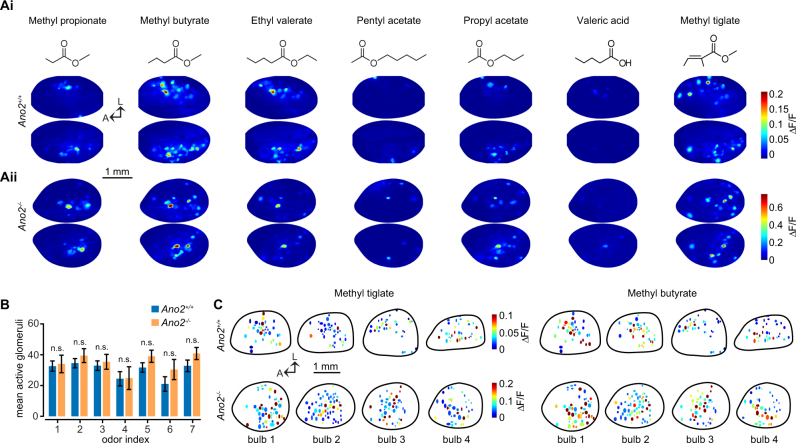Figure 1.
Functional maps of ORN activity. Ai-Aii. Example functional maps for seven unique odors in a representative Ano2+/+ (top) and Ano2−/− (bottom) animal. Molecular structures of the odors in the panel are depicted above. (B) Number of glomeruli per bulb (n = 11 Ano2+/+ bulbs, n = 5 Ano2−/− bulbs) responding to each of the seven odors above ROC threshold (threshold = 0.005 ΔF/F; p > 0.05, Wilcoxon rank-sum test with Bonferroni multiple comparison correction). (C) Example functional maps from four Ano2+/+ and Ano2−/− bulbs each for two different, but related odors. Glomeruli are represented as pseudocolored ellipses. The position of each ellipse reflects the location of a glomerulus within one olfactory bulb hemisphere. The black line designates the boundary of the imaged region of each olfactory bulb.

